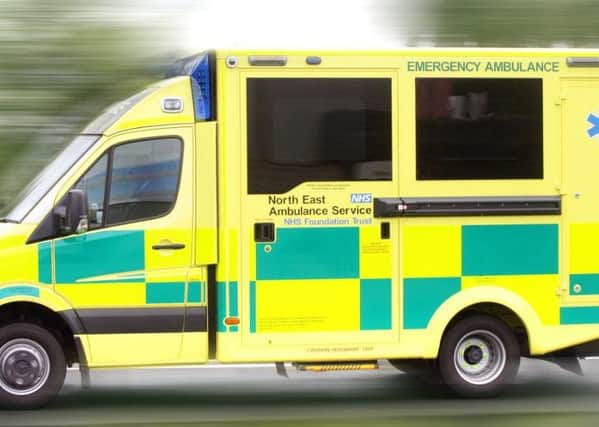North East Ambulance Service job times have doubled since 2006


Assistant director of communications for the trust, Mark Cotton, said that the rise is a “reflection of how different the job is today than it was 12 years ago”.
The ‘job cycle’ statistics were revealed to Durham County Council’s special, adults, wellbeing and health scrutiny committee this week, following a request by councillors.
Advertisement
Hide AdAdvertisement
Hide AdData measures the average time from the 999 call to the patient being taken to hospital and ends with a crew being free to take on other jobs.
However, the figures showed an increase over the 12 year period from 52 minutes in 2006 to one hour 43 minutes in 2018.
Reasons for the rise, Mr Cotton explained, include paramedics dealing with more patients with chronic conditions which requires them to be on scene longer.
He added that paramedics have to develop their clinical skills to deal with these complexities – “which takes time” – alongside improvements in specialist care and treatment.
Advertisement
Hide AdAdvertisement
Hide AdAs a result, he said, ambulances may bypass the nearest available hospital to access specialist centres in other areas which could deliver better outcomes for patients.
Coun Geoff Darkes asked what plans were in place to reduce the job cycle time.
“You have given us the reasons but I’m not hearing any mitigation,” he said.
Mr Cotton explained that the average job cycle response describes the availability of an individual ambulance crew to respond and that the focus was on patient outcomes.
Advertisement
Hide AdAdvertisement
Hide Ad“It’s about ensuring there are the resources there to meet demand rather than bringing the job cycle down,” he said.
The deputy director of quality and safety at NEAS, Debra Stephen, also gave a presentation linked to the trust’s draft quality report for 2017/18.
She admitted the trust has faced “pressures” in terms of managing responses to all levels of patient need, citing it as a issue affecting the whole sector.
One way of tackling pressures, she said, includes “early clinician input” which allows NEAS to match vehicle type and response with level of care needed.
Advertisement
Hide AdAdvertisement
Hide AdOther ideas include working with community services – such as nurses, carers or medical staff- to help prevent long waits for elderly people who suffer falls.
Future priorities for the trust include early recording of sepsis and measures to improve responses to cardiac arrests – from real time feedback for medics to improved training.
It will also focus on safeguarding referrals, mental health education, early recording of sepsis, cardiac arrests and improved training.
Scrutiny committee chairman, Coun John Robinson, asked why the Durham area is “always the outlier” compared to other health trusts.
Advertisement
Hide AdAdvertisement
Hide AdMr Cotton explained that the ambulance service needs to work closely with commissioners to make sure they have resources available to respond.
“The ambulance services play an urgent role and we see the big picture and where the pressures are,” he said.
“We’re working to not let these build up”.
In 2017/18 a new set of standards were introduced to monitor ambulance service response times replacing the previous two-tier system with four new categories.
This ranges from life threatening conditions at category one to non-urgent cases that don’t require transportation to a hospital “in a given time window” at category four.
Advertisement
Hide AdAdvertisement
Hide AdBetween October 30 2017 and January 31 2018 – the trust met targets for ‘Category A’ with a mean figure of six minutes and 44 seconds against the seven minute national target.
While NEAS was the only trust in the country to meet this target for the most critical patients in this period, it failed to meet benchmarks for less serious calls.
Category two patients should be seen within 18 minutes and category three within two hours.
In December, NEAS’ average response times were 28 minutes 52 seconds for category two, and two hours 14 minutes for category three.
Advertisement
Hide AdAdvertisement
Hide AdMr Cotton, speaking after the meeting, said that NEAS has not performed as well for response times in County Durham due to its rurality and road networks.
He added “building up a workforce” is key to improving response times.
“If each crew is spending longer on each particular job, we need more crews to be able to respond and meet that increase in demand,” he said.
“Working longer on each patient doesn’t mean that others are being neglected, it just means we have more staff now than we did 12 years ago.”
NEAS covers Northumberland, Tyne and Wear, County Durham and the former county of Cleveland in North Yorkshire.
Chris Binding , Local Democracy Reporting Service